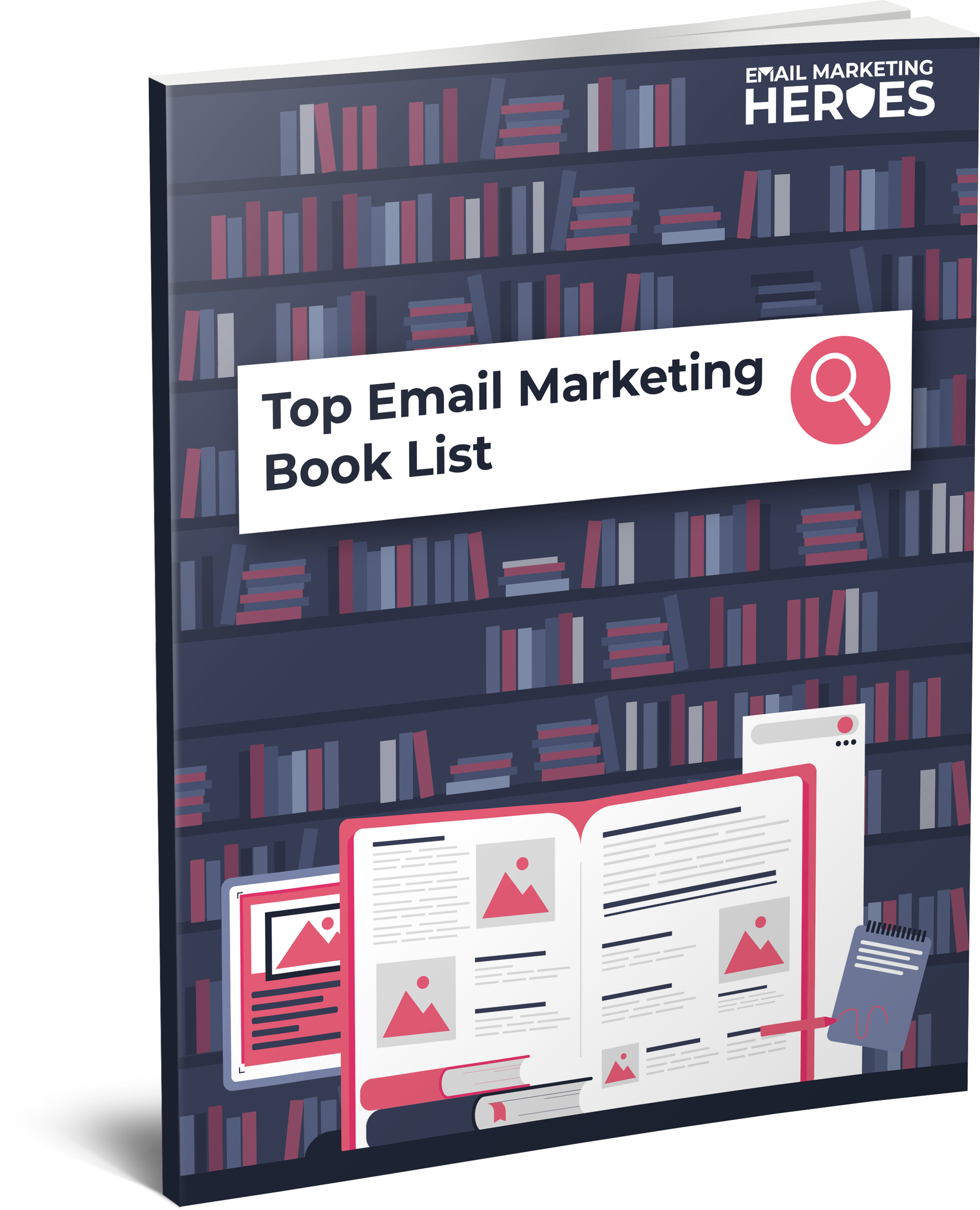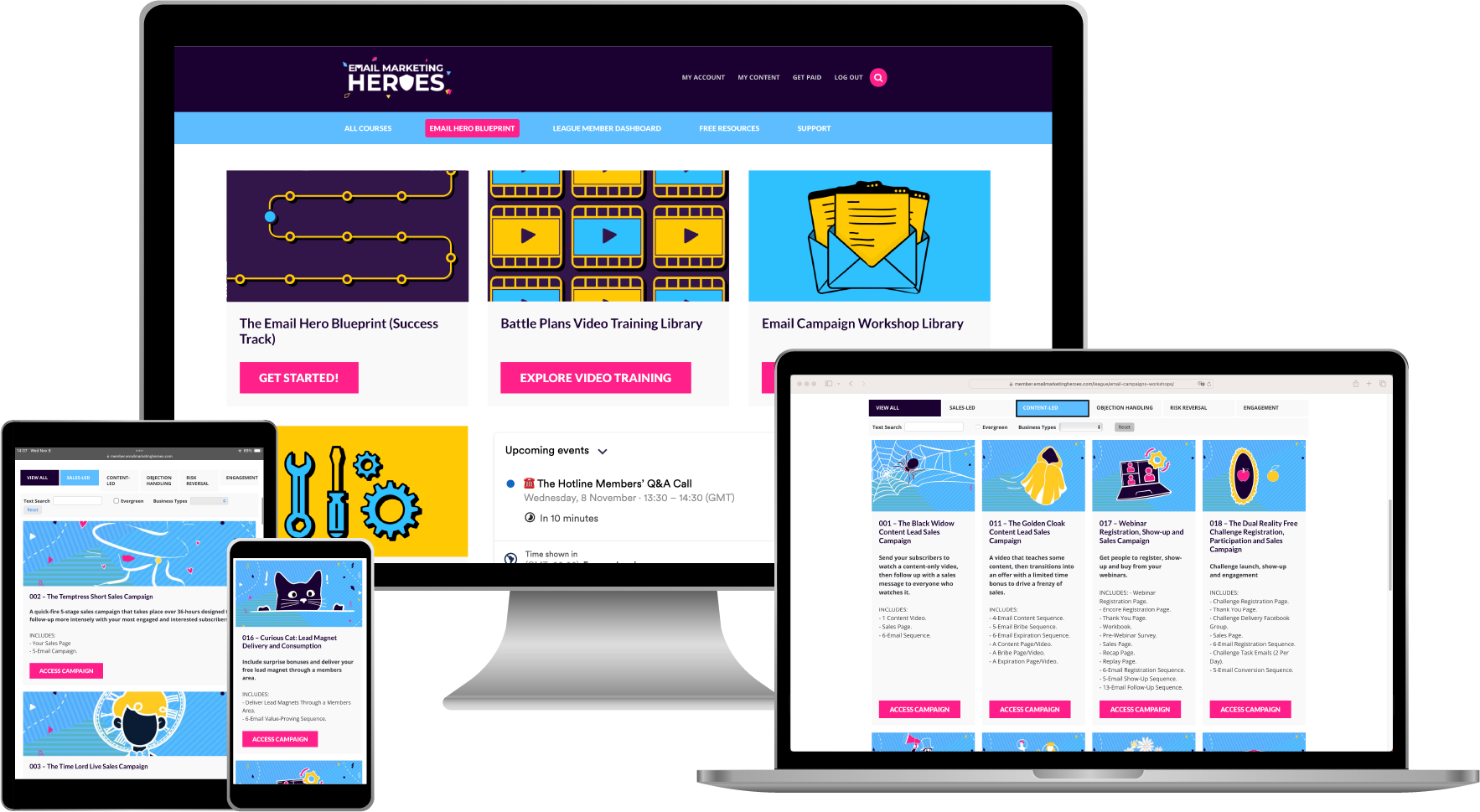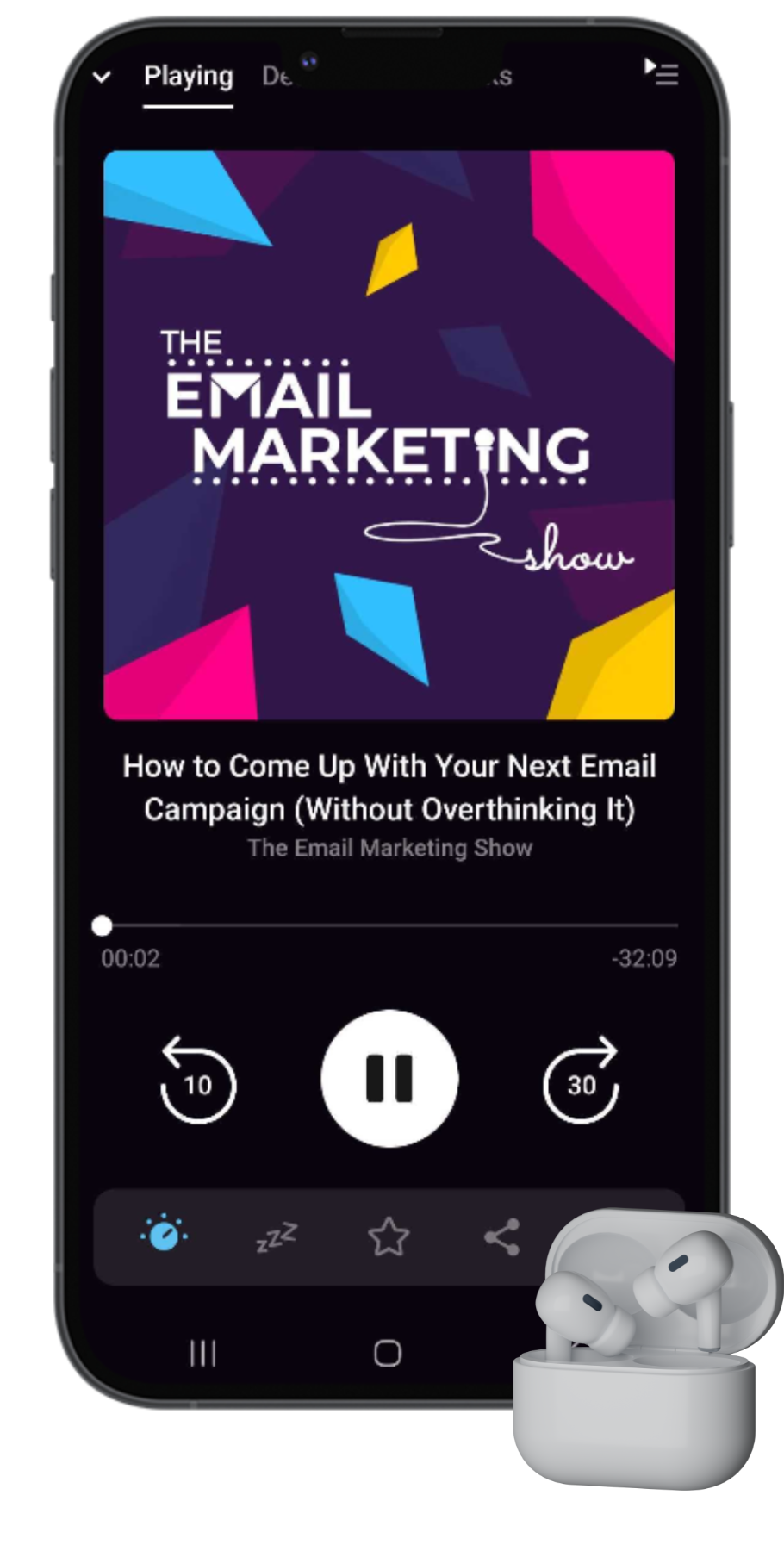
Behind The Scenes of our Business Strategy Session in Manchester
This week we're giving you something a little different – something that has less to do with email marketing and a lot more to do with how to run a business strategy session for your business. And to help you do just that, we're taking you behind the scenes of our own business strategy weekend in Manchester.
Ready to be inspired? Because this will no doubt help you come up with some great ideas for your own business.
SOME EPISODE HIGHLIGHTS: (0:24) Want to get more sales from your email marketing? Grab our Click Tricks. (4:00) Fancy a 14-day FREE trial with Keap? (5:04) Booking our business strategy session 'weekend'. (9:59) Creating the agenda for our business strategy session. (11:36) Are you the bottleneck in your business? (14:55) Creating an 'organisational chart' of our staff. (18:19) The Love - Happy - Hate exercise. (20:59) Create the business YOU want. (29:27) Working less IN the business and more ON it. (36:09) Subject line of the week.
Want to get more sales from your email marketing?
We put a little something together for you. It's really cool and it's FREE (yes, it's cool and free – we're nice like that). If you want to make more sales from your email marketing, you need more clicks on the things that you're selling!
That's why we're giving you 12 creative ways to help you get more clicks in every email you send. It's a FREE download, and it's called Click Tricks. You can grab it here.
Our business strategy session ‘weekend'
A few months ago, we booked an Airbnb in Manchester to run our very first business strategy session. We went for two days during the week, but we like to call it a ‘weekend'. Because, why not?
This trip obviously came to a cost, but we wanted to give ourselves a bit of a treat and also get value from the experience. So we booked first-class train tickets and picked an apartment over a budget hotel. Why? Because we wanted somewhere comfortable and not cut any corners. We invested in this, and that put us in the mindset of working hard for it.
We chose a place where we could get our heads down and do a lot of work – rather than sitting with bits of paper on a bed. Our apartment had three different areas we could work in. And that meant we could keep ourselves refreshed and our brains active instead of being trapped in a tiny room.
Why Manchester? Because we purposely chose to be away from home. We wanted to get into a different mindset – think about the business in a different way. And why not make this a bit of a holiday, too? We made some time for fun, always went out to eat (rather than cooking in the apartment), and had a nice meal and some cocktails too.
Another thing we did was to ask our team not to contact us unless something was on fire. Our CTO could contact us in case of an emergency, of course. But otherwise, we signed off from Slack for two days. And this gave our team some independence but also ensured we weren’t going to deal with day-to-day business questions and issues.
Creating the agenda for our business strategy session
On the lead-up to our business strategy session, we both kept a Google Document where we listed things to discuss in Manchester. What did we put on there? We added anything that we felt was problematic in the business, like things that we were doing that we thought perhaps we shouldn't do. But we were also on the lookout for opportunities for growth – ways to maximise the profitability of the business.
So we started with a very disorganised agenda for this meeting. And on the way to Manchester, we condensed it down and categorised all the items into sections.

The Top 10 Books To 'Power Up' Your Email Marketing
10 book recommendations that will improve all areas of your email marketing (including some underground treasures that we stumbled upon which have been game-changing for us).
Are you the bottleneck in your business?
The main thing we wanted to discuss was the fact we both felt we'd been the bottleneck in our business. We wanted to understand whether that was true and then figure out how to change this. For example, we were approving every graphic for the podcast or social media, every sales page, every lead magnet, etc. There were lots of areas in our business where our staff always seemed to be waiting for us because of how we'd set things up.
Everything felt slower than it needed to be, and we felt bad for it. Plus, we worried that this could end up affecting our members and customers. It never did (because we’re both acutely aware of customer experience), but as we continue to grow our business and serve more customers, we knew these problems would only be amplified. So we started looking at the systems and people to ensure these issues wouldn’t escalate. And this is something worth remembering for anyone running a business – any issues you have now are only going to be amplified as your business grows.
Ultimately the whole responsibility for our business lies with us. But during our time away we started looking at ways to delegate some of the day-to-day responsibilities so that all the decisions and checking of various areas of our business wouldn’t be with us anymore. In other words, we started thinking about how we could empower the people in our team to make decisions, own elements of the business, and have more responsibility. And this was easy because our staff is made of people we have chosen – people who are excellent and who we trust fully.
Creating an ‘organisational chart' of our staff
In order to be able to make changes to our team so we didn't have everyone reporting to us, we mapped out all our staff members. Considering we're a small business, we have quite a large team. And there's a strategic reason for that. We used to have a very lean team, which meant the few people in our team had a lot of responsibilities. And when they let, they left a big hole in our business.
So now we take a different approach and have more people who focus on specific aspects of the business. The downside is that everyone would report to us, which put us in charge of all the micro-decisions in the business. And this was a mistake. A consequence of the fact that we were growing – and not just financially. We'd been adding more elements to our business (pushing Instagram more, growing our membership The League, our Facebook community, etc.), and that meant our team had been growing too.
So we created drew a hierarchy of our staff, even though we don't like to think of our team this way. Because our staff is in charge – they manage us and keep us in check, so we don't see ourselves as being above them. But this exercise allowed us to figure out who needed to report to us and who didn't.
And our advice to you would be to reduce the number of people who directly work with you and put others in charge. We started that process a while back, but a few months in we're still working on implementing that plan. And that's because it takes time to unpack the thought processes in your head, give them to someone else, and have them feel confident and competent in being able to run things.
The Love – Happy – Hate exercise
The next thing we did was an exercise we call Love – Happy – Hate. This is something we'd never done together, even though we’ve been friends for about 20 years! We never had deep conversations about what makes us happy, what we want, or what our weaknesses are.
So for this exercise, we divided a piece of paper into three columns under the headings Love, Happy, and Hate. And then it's pretty simple. In the Love column, you list the things you love doing in the business. For us, this is things like hosting our online coaching calls inside our membership The League, for example.
In the Happy column, you list the things you’re happy to do. These are things you don’t love or hate, but if you have no one else in your business who can do them (or can't afford to outsource them), you're happy enough to do them yourself.
And in the Hate column, you list the things you hate doing. For us, it's bookkeeping and accountancy. And thankfully, we already have people who take care of that. These are almost non-negotiables – things you're not prepared to do yourself.
This exercise led us to some interesting revelations about ourselves, each other, and our individual strengths and weaknesses. And that cemented the fact that we are quite different in terms of the lifestyle we want and the things that make us fulfilled and happy.
Create the business YOU want
So even if there's no one else in your business, this is an exercise worth doing. And if you have business partners or members of staff, by all means, do this with them because it’s important to decide what you want. Often, our businesses are shaped around what we need at the time.
Let's say you have to make some cash and fast, for example. You might start selling Power Hours. And that works to an extent, but before you know it, you're having more Power Hours than you can handle, and you become the bottleneck in your business. Power Hours aren't scalable, and you realise you have a business on your hands that isn't what you wanted. This is an extreme example, but it happens.
So make sure you’re creating the business and life you want, rather than doing the things you have to do in order to pay the bills.
For us, one of the things we both like to do is travelling. So during our business strategy session we agreed to shape the business in a way that allows us to travel. That’s how we decided to do a Mastermind in the States, for example. And we decided that at the back of paying attention to what we love doing and what we want out of our business.
Plus, we also decided we wanted to get paid better because we’re not the best-paid people in our business. We have team members and agencies who work with us who get paid a lot more. So another thing to consider is whether you're paying yourself enough. You are, after all, the business owner, the founder, and the thought leader.
Looking at the different parts of your business
The next thing we did was to look at the different parts of our business. So we have our membership The League, our email writing agency, a series of standalone products, and an idea for a mastermind. We looked at how things are working in each of these areas and how much effort is going into them.
Then we considered each area to check whether it was profitable, for example – and not just in cash terms. It’s important to take into account both money and time. So for the effort we put in, are we getting a good return? What's broken and what needs fixing? Is there anything that isn’t working or that we want to get rid of?
For example, in 2021 we spent a lot of money on Facebook ads and lost thousands of dollars. So we decided to stop doing ads and instead amplify the things that are already working for us. Do you have any products, services, or marketing channel activities that you'd like to make a conscious decision to step away from?
Mapping out the future
Then we mapped out on a huge sheet of flip chart paper where we're going as a business and where we want to be in three years from now. Because believe it or not, we'd never sat down to figure out what would be a good outcome, where we’d like to be, or where we think we need to be at the end of this year in order to be on track.
And then we looked at what needs to happen in the business. We considered all the moving parts we need to operate in order for everything to be effective. And by the end of the two days, we left with 5 or 6 bits of paper which we took photographs of and stuck into Google Drive.
Working less IN the business and more ON it
When we got home at the end of the two days we felt we'd had a break from working in the business. And this made us realise that we were indeed working in the business probably 80% more than what we wanted to. We haven't been able to step back that much – not yet. We're still very much under the hood in the business.
And the reason why we want to work less in the business is that we think we can have more of an impact on it if we do. We can focus on more creative aspects that will help us reach more people and improve their sales through the email marketing strategies we teach. Working less in the business will allow us to have the mental bandwidth to focus on those bigger-picture things, while our staff deals with the day-to-day operations.
Being less in the business doesn’t mean we don’t want to talk to customers anymore – quite the opposite, in fact! We want to understand our customers more and be fully immersed in thinking about how we can supply even more amazing campaigns for members of The League and better serve our community.
But we can only do that if we’re not being pulled in the minutiae of the business. Otherwise, it's hard to maintain the bigger-picture clarity we need in order to make sure the business is sailing in the right direction.
Our staff doesn't need us!
At the end of the two days, we reflected on our business strategy session and checked in on Slack. We'd expected to have dozens and dozens of messages and notifications pouring in about things that weren’t working and needed our attention. But interestingly, that didn’t happen. In fact, there were fewer messages than we would have had on any other 2-day period.
And that made us realise our staff didn’t need us that much – not if we weren’t available. It was a big ha-ha moment for us – probably no surprise to our staff, who knew they could do this all along. They didn’t need us as much, but we'd made ourselves involved in a lot of things we shouldn't have.
So if you've never had a business strategy session (or haven’t had one for a while), book yourself into a two-day trip away from your business and the environment you’re normally in and try this. Go somewhere where you won't be pulled into any of the day-to-day work because the key is to stay focused on what you’re trying to achieve. And the more you immerse yourself in this exercise, the better the results are going to be.
Subject line of the week
This week’s subject line is “Joy 1, Numbers 1”. So the concept of this email from Kennedy to his list of magicians was that there are things in your business that you enjoy – so that's one score for Joy. And sometimes there are things you don’t enjoy, like (for Kennedy) – ‘numbers stuff'. But you still have to do these tasks in order to be able to do the things that bring you joy.
So the way you could use this concept in your own subject line would be to pick two things that you can give scores to – just like you'd do in sports. It could be any two things you want. And it’s an interesting way of grabbing people’s attention with some numbers in the subject line.
Useful Episode Resources
Related episodes
Why We Started an Email Marketing Agency.
Who Should Do Your Email Marketing?
FREE list of the top 10 books to improve your email marketing
If you want to write better emails, come up with better content, and move your readers to click and buy, here's how. We put together this list of our Top 10 most highly recommended books that will improve all areas of your email marketing (including some underground treasures that we happened upon, which have been game-changing for us). Grab your FREE list here.
Join our FREE Facebook group
If you want to chat about how you can maximise the value of your email list and make more money from every subscriber, we can help! We know your business is different, so come and hang out in our FREE Facebook group, the Email Marketing Show Community for Course Creators and Coaches. We share a lot of training and resources, and you can talk about what you're up to.
Try ResponseSuite for $1
This week's episode is sponsored by ResponseSuite.com, the survey quiz and application form tool that we created specifically for small businesses like you to integrate with your marketing systems to segment your subscribers and make more sales. Try it out for 14 days for just $1.
Join The League Membership
Not sick of us yet? Every day we hang out in our amazing community of Email Marketing Heroes. We share all of our training and campaigns and a whole bunch of other stuff. If you're looking to learn how to use psychology-driven marketing to level up your email campaigns, come and check out The League Membership. It's the number one place to hang out and grow your email marketing. Best news yet? You can apply everything we talk about in this show.
Subscribe and review The Email Marketing Show podcast
Thanks so much for tuning into the podcast! If you enjoyed this episode (all about our business strategy session in Manchester) and love the show, we'd really appreciate you subscribing and leaving us a review of the show on your favourite podcast player.
Not only does it let us know you're out there listening, but your feedback helps us to keep creating the most useful episodes so more awesome people like you can discover the podcast.
And please do tell us! If you don't spend time on email marketing, what do you really fill your working days with? We'd love to know!







